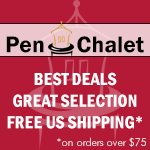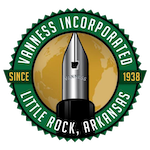(This is a guest post by Jon Bemis. You can find Jon on Twitter @jtower42.)
One of the most interesting things I've gotten to be a part of in the dozen years I have spent at my company is the biannual contract negotiations with our labor union. Management and labor have had a great working relationship for decades, and while negotiations with them are tough, I enjoy being able to participate in the process. I feel lucky; I read about companies that have an acrimonious relationship with their union, and I imagine that wouldn't be any fun at all.
My role on the team has historically been to negotiate and consult on shop rules, operational issues, and our job posting procedure. I'm not a financial guy or a benefits expert - we have other folks on our team to handle those questions. We've had a pretty cohesive team for a number of years.
But this year, the team was shaken up: Peter, our lead negotiator, passed away after a short battle with cancer. He had sat in the "big chair" since 1979 and was a master at what he did. He had a gift for keeping all the proposals and counter-proposals straight in his head, and he knew what we could and couldn't agree to. He was the lead dog and we all followed him. To say his absence from the negotiations process made us nervous was an understatement. Mike, our vice-president of Human Resources and for six years Peter's wingman, suddenly found himself with a lot of responsibility on his shoulders.
We were sitting in a planning meeting when Mike commented that he was worried about keeping track of everything and having a record of everything we talked about. "I feel like we need someone to take really good notes, so we can refer back to conversations or comments if we need to," he said. I realized as he said it that I was the man for the job. I had worked for a few years in journalism and had gotten good at taking notes on the fly, and I was a relatively experienced member of the team and would know what was important to take down.
Plus, I thought, this would be an opportunity for a lot of writing with fountain pens. Help the team and feed my addiction at the same time? Sign me up!
I raised my hand. "I'll do it," I said.
Negotiations lasted two weeks. Most days, our first session with the union team would start before 10 a.m. We would discuss issues and concerns back and forth with the union, and then break into separate meeting rooms to "caucus" on what we had just discussed. This process of meet together and then meet separately would continue into the evening, usually until 7 or 8 p.m. There was a lot of discussion, a lot of back-and-forth, and that meant pages and pages of notes. I have medium-to-large handwriting and prefer a medium nib, so I went through paper quickly. I was still a little surprised when, with one day left to go, I finished the last page of an 80-sheet A4 Rhodia Ice pad. I had hoped I would have plenty of opportunity to use fountain pens, and I certainly did.
The most rewarding part was when our corporate attorney asked if I was saving my notes. "Of course," I said. "I'm handing them in to our Document Services person to be typed up."
"That's good, but you should keep the handwritten notes as well," he said.
My notes were full of scratch-outs, misspellings, and the occasional doodle. Why would our lawyer want me to save them?
"Your notes are considered a 'contemporaneous' account of the proceedings," he said. "They have a value in a court or an arbitration because they have not been edited or modified," he said.
I was tickled. To think that my multi-colored chicken scratch had legal standing was almost too funny to comprehend. The likelihood that my notes would ever end up in a courtroom was slim to none, but I was delighted nonetheless that my indulgent hobby could one day be entered into evidence.
We ended up getting a fair contract - both sides felt a little pain, which is the hallmark of a good negotiation. It was one of the more stressful things I'd done in my career. Making a mistake could have meant a strike and a dent in our longstanding labor peace. Losing Peter's leadership meant we had find our own way through this fire swamp, which was difficult.
At the same time, I enjoyed using my pens and trying out inks. I rarely get to write as much as I did during those seven nerve-wracking days. It felt odd, almost scandalous, to have fun during such a serious time. It was like fighting a fire in flip-flops or running a space shuttle launch from a hot tub. It reminded me of the line from "Mary Poppins": "In every job that must be done, there is an element of fun. Find the fun, and SNAP! The job's a game."
Perhaps that's one of the reasons all of us pen addicts are so passionate about our crazy hobby. Whether we're in foodservice or finance, programming or procurement, creative or corporate, using an excellent pen takes away a little drudgery and adds a little happiness to our days.
Pens I used, in no particular order:
- Modern Conklin Duragraph (medium nib) with J. Herbin Bleu Pervenche – I really enjoyed the medium nib on this pen.
- Pelikan M1000 (medium) with Pelikan Edelstein Tanzanite – Conversely, this medium nib was too wet and broad for rapid note taking.
- Delta Unica (medium) with Organics Studios Uranium – I picked up the limited edition of the Unica in the gold-orange celluloid. Looks amazing, writes wonderfully.
- Franklin-Christoph Model 19 (medium) with Sailor Shigure. – I love the feel of this pen in hand, but the nib had some minor skipping issues.
- Bexley Stalwart (medium) with Private Reserve Naples Blue – The Bexley was wonderful, and the grooved barrel provided excellent grip during quick notes. The Naples Blue, on the other hand, dried WAY too slowly on Rhodia paper. Those pages ended up all smeary.
- Pilot Custom 74 (fine) with Sailor Oku-Yama – Love Pilots. Just love ‘em.
- Pilot Prera (medium) with Pilot Blue cartridge – To this day, even against much more expensive pens, the Prera still holds its own. My stone-cold, lead-pipe recommendation for anyone’s second fountain pen.
- Franklin-Christoph Model 3 (medium) with Noodler’s General of the Armies – The Model 3 is a solid writer if not spectacular. The Noodler’s is really nice in finer-nibbed pens, but in this medium, the dry time was a little long for notetaking.
- Pelikan M205 (medium) with Organics Studios F. Scott Fitzgerald – This pen fell way, way down in my personal rankings after negotiations. It took a lot of pressure to get a consistent line, and with the small barrel diameter, my hand got tired quick.
- Pilot Custom Heritage 92 (medium) with Pilot Iroshizuku Shin-Ryoku. – The Custom 92 was my first grail pen. It’s an all-time favorite.
- Faber-Castell Ondoro (medium) with Pilot Iroshizuku Fuyu-Gaki – The Faber-Castell steel nibs are very nice, and that’s about it.
- Lamy 2000 (medium) with Organics Studios Edgar Allen Poe – I feel like the writing experience with the Lamy 2000 is particularly dependent on the ink used. The Poe was a good match and enjoyed using the 2000.













